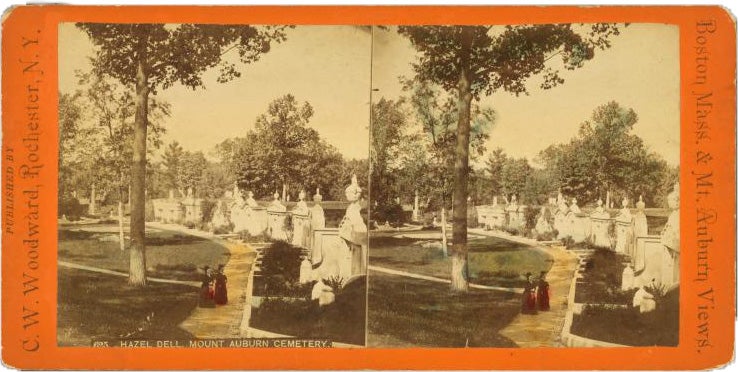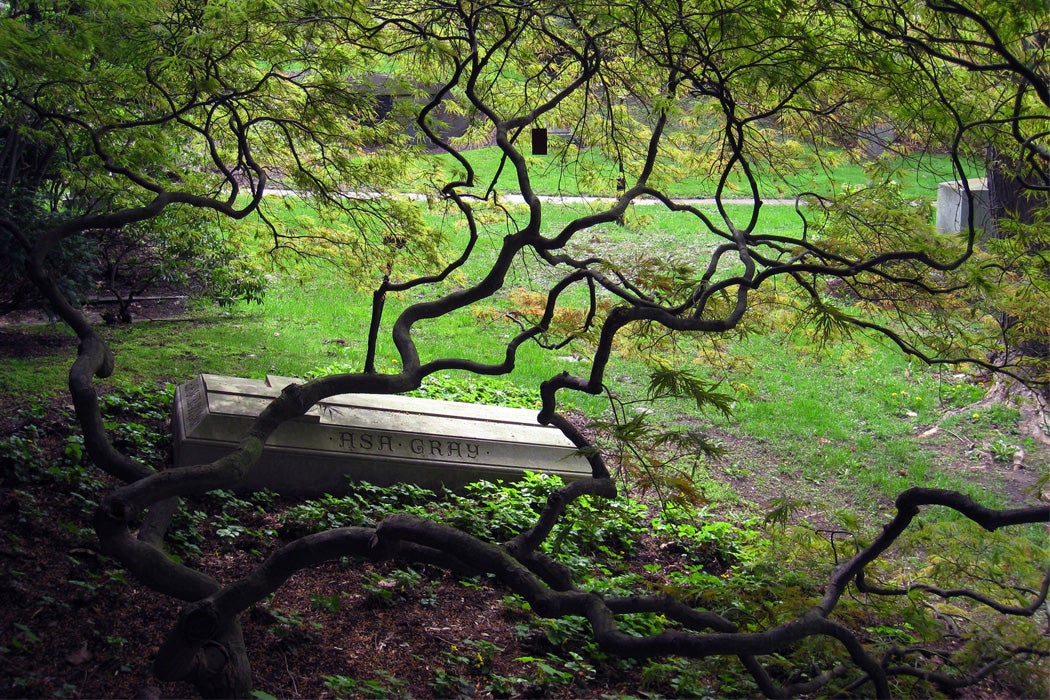In the nineteenth century, American cities had a problem with the dead. As urban areas became more densely populated, the churchyards in which the dead were interred became overcrowded and were considered public health hazards. Outbreaks of epidemics like cholera and yellow fever were blamed on these festering burial grounds, which were often so full of bodies that they towered over the streets. Industrialization was rapidly claiming available land for development, with little space left for the dead.
“As the urban environment became paved over, more hurried, and commercial, a change of scenery reminiscent of the rural past, a readily accessible natural sanctuary within close proximity to the city, became necessary,” writes historian Thomas Bender in The New England Quarterly. “A romantic landscape was sought as a counterbalance to the disturbing aspects of the cityscape. This was the attraction of the rural cemeteries on the outskirts of most American cities.”
The first example of the rural cemetery movement in the United States was Mount Auburn in Cambridge, Massachusetts. Dr. Jacob Bigelow and General Dearborn of the Massachusetts Horticultural Society opened the cemetery in 1831. It reflected their botanical interest and borrowed from English landscape traditions. Mount Auburn also mimicked European cemeteries like Père Lachaise in Paris, founded in 1804, in its location on the edge of a metropolitan area rather than right at its center. The unpleasant corpses would be far from day-to-day life, and, in turn, the living could come to these spaces as an escape.
“A proto-ecological reform movement was afoot in the cities of antebellum America, encompassing concerns with sanitation, public health, aesthetics, and equal access to green spaces,” states environmental historian Aaron Sachs in Environmental History. “Putrefying corpses no longer would pile up in grim graveyards (thought to be the source of rank, unhealthful miasmas), and walkers in the city no longer would be deprived of fresh air and sheltering trees.”

Dozens of similar cemeteries followed, including Philadelphia’s Laurel Hill in 1836, Brooklyn’s Green-Wood in 1838, Baltimore’s Green Mount in 1838, and Rochester’s Mount Hope in 1838. Few American cities in the mid-nineteenth century had park systems, major art museums, or botanic gardens, and these cemeteries attracted people as much for recreation as for mourning. Picnics on the lawns and carriage rides on the winding paths accompanied viewing of the monuments, which similarly represented a shifting attitude toward death.
“Early visions of the rural cemetery emphasized naturalness of landscape, but increasingly that natural setting took second place to man-made adornments such as statuary,” explains historian Charles O. Jackson in the Journal of American Studies. “That effort to make the death-setting lovely would progress to the point where critics began to insist that limits be drawn. It was wrong to hide all the harsh realities of death.”
Indeed, whereas colonial American churchyards were packed with skulls, winged hourglasses, and other “memento mori” messages, the rural cemeteries were adorned with soaring angels, carvings (and plantings) of weeping willows, and other such statements that death was more of a peaceful transition than a deadline for repenting. Although these cemeteries were incredibly different from the previous burial grounds, particularly in their secular romanticism, they were popular.
Weekly Digest
“Only two years after Mount Auburn’s establishment the English actress Fanny Kemble reported that it was already ‘one of the lions’ of the area, and that ‘for its beauty Mount Auburn might seem a pleasure garden instead of a place of graves,’” historian Stanley French relates in American Quarterly. “About the same time a Swedish visitor was so enchanted with Mount Auburn that he declared, ‘a glance at this beautiful cemetery almost excites a wish to die.’”
Eventually the rural cemetery and its sentimentality faded out of fashion, and these former outskirts were absorbed into cities. Contemporary burial grounds, now frequently referred to as “memorial parks,” are much more somber in terms of their layout and imagery, with stark granite stones positioned in grass with only sporadic trees. Yet these rural cemeteries survive within contemporary cities, and continue to offer a meditative respite from urban life.







